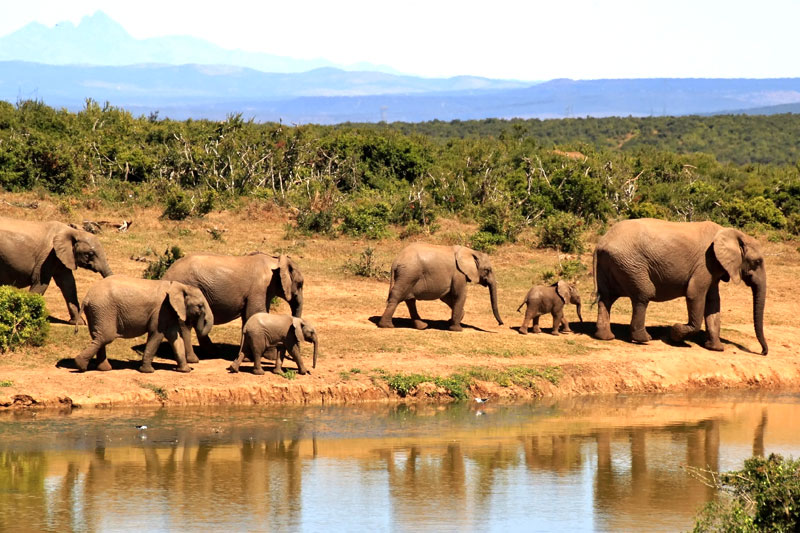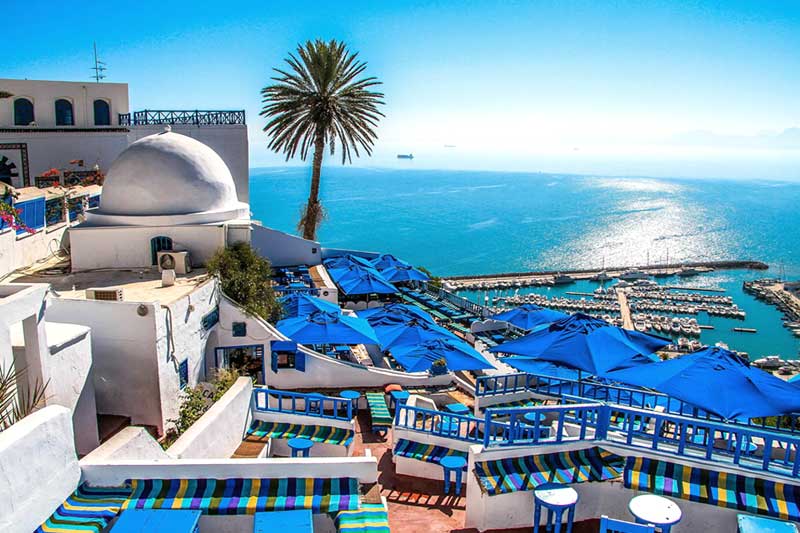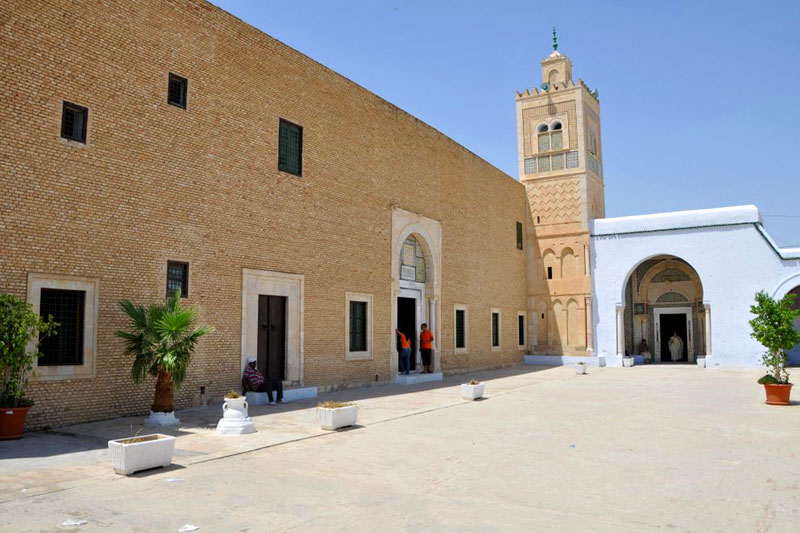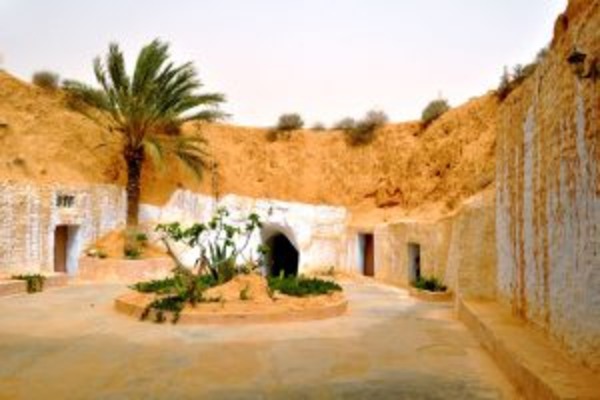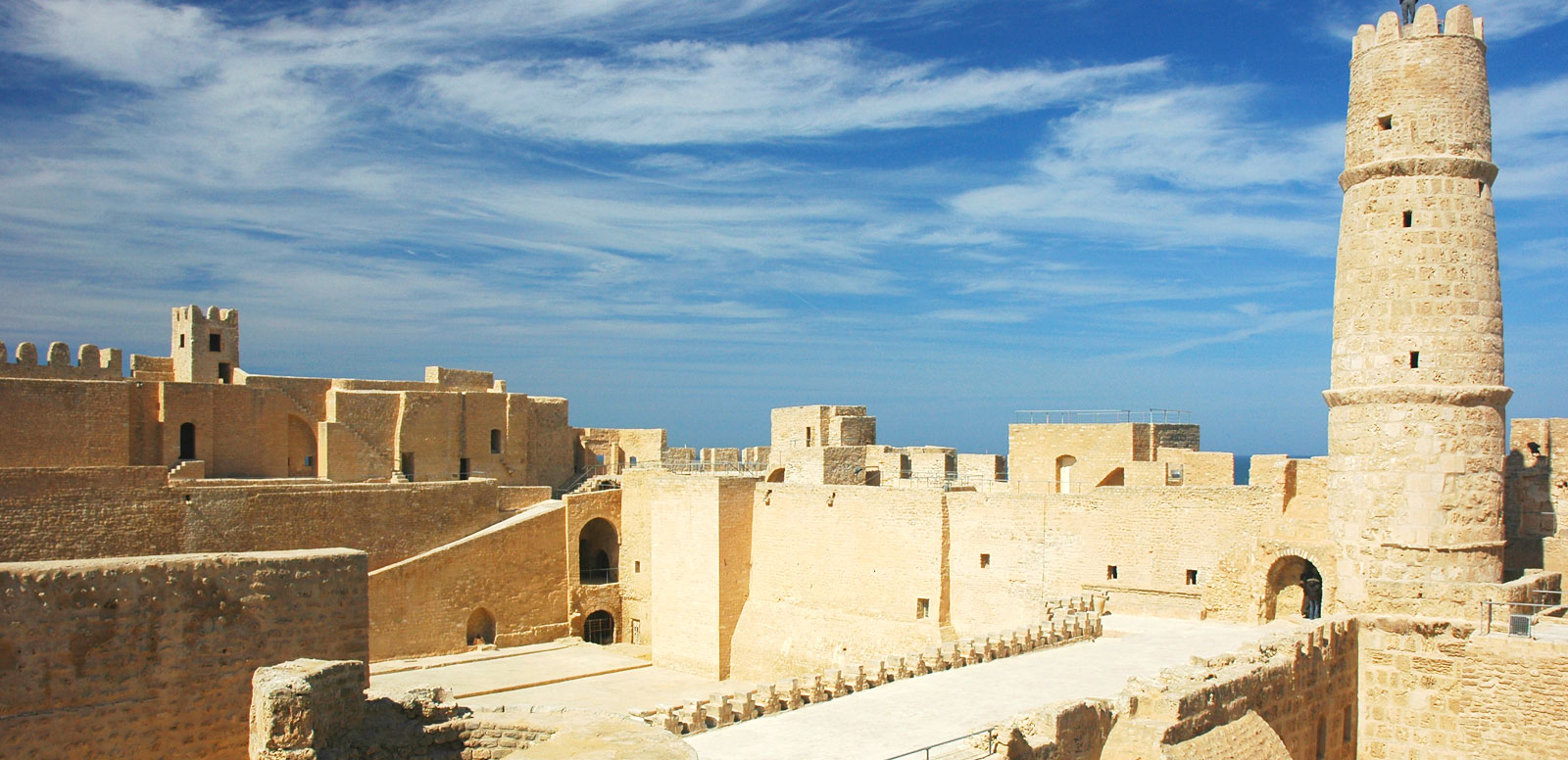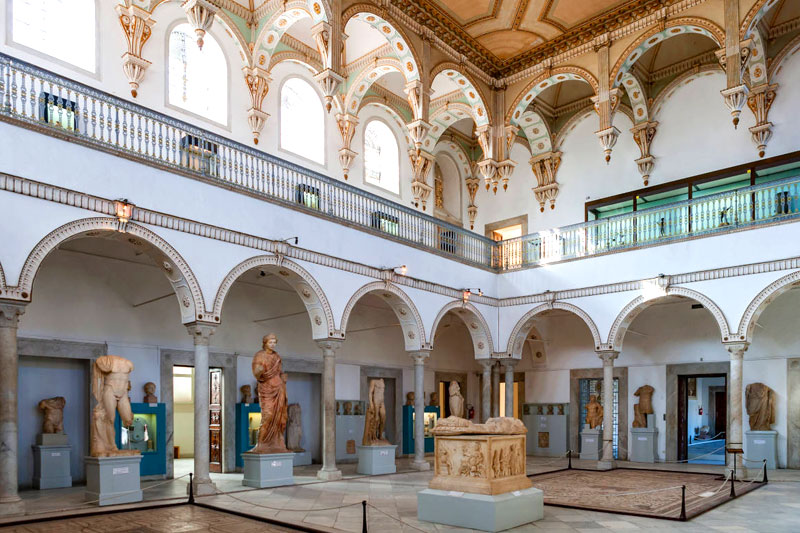Share:
Share
Tunisia Cultural and Ecological Tour

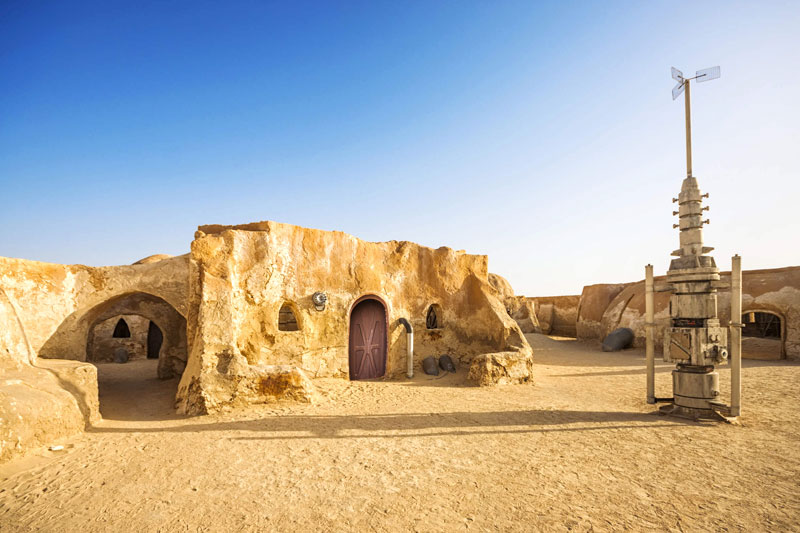
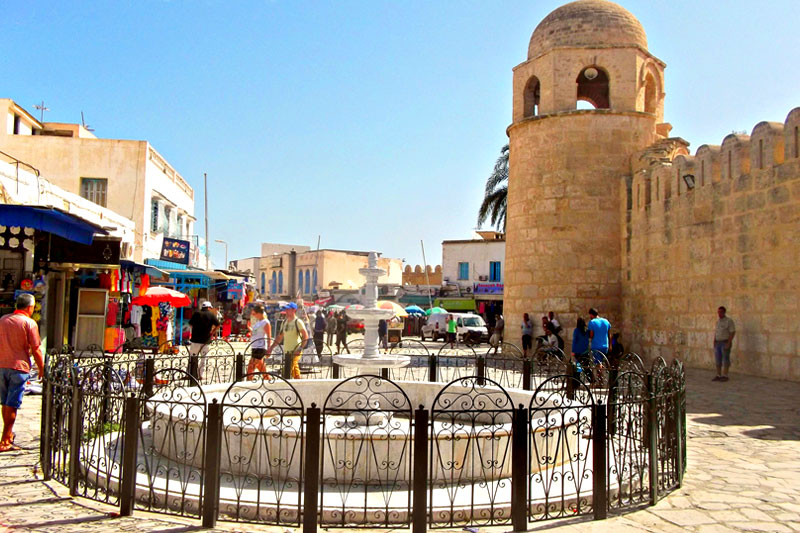
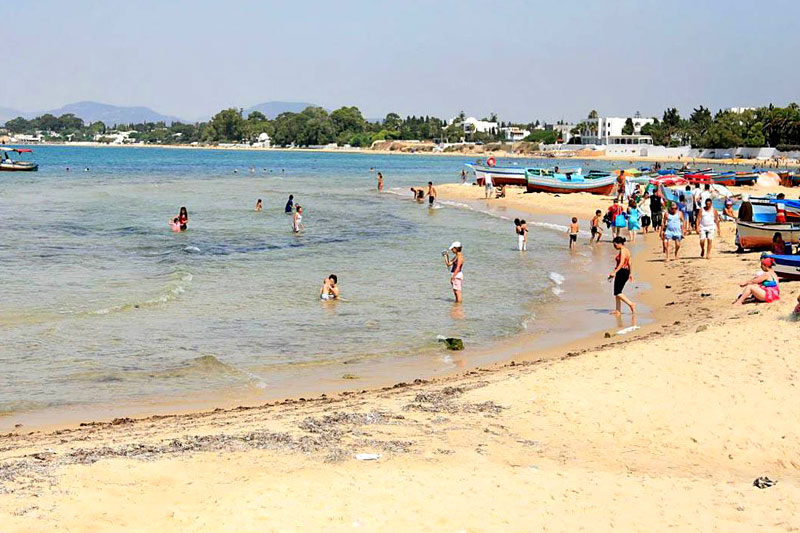






Visit: Tunis - Hammam Bourguiba - Tabarka - Ichkeul National Park - Hammamet - Douz - Tozeur - Kairouan
- Arrival at Tunis Carthage airport, assistance and transfer to your hotel in Tunis.
- Check in, dinner and overnight in the hotel.
- After breakfast, departure to the northwest (the 1st fertile region of all Tunisia)
- Arrival to Testour: visit of the city center, the city is on the territory of the Berber tribe of Bejaoua :
It became one of the great Moorish cities after the migration of these to Tunisia around 1580. It was built in the early seventeenth century (around 1609) on the Medjerda instead of the Roman village of Tachilla. Its Great Mosque built in the first third of the 17th century, probably before 16314, its alleys and houses over 600 years old make it one of the oldest cities in Tunisia. The city is home to an international festival of malouf and Arab and traditional music since 1967. The Great Mosque of Testour, founded in the early seventeenth century and resulting from an unprecedented synthesis between the local traditions of Ifriqiyenne and decorative techniques and Hispano-Moorish architecture it is one of the most remarkable examples of Moorish art in Tunisia. Below one of the windows is the dial of a clock, a feature that is rarely found in the minarets of its time of construction. In addition, the hands turn upside down and the numbers are oriented towards the center. In December 2014, at the initiative of the Tunisian engineer Abdel Halim Koundi of Andalusian origin, this clock is rehabilitated and restarted after nearly three centuries of failure.
- Then hike through the fields until the arrival at the farm Borj Lella (16km from Beja) :
- From the top of a hill, overlooking the plain of this green countryside, presentation of this magnificent cheese fatory-sheepfold which is part of the European Union’s project 'Lactimed'. This project aims to enhance and strengthen the production and distribution of typical dairy products in the Mediterranean. Borj Lella is a table d'hôte that offers its visitors demonstrations of the transformation of 20 to 40 L of cheese and ricotta cheese milk. It is also an opportunity to taste fresh dairy products: yoghurt, ricotta, butter and Sicilian-Sardinian sheep's milk (possibility of buying fresh products)
- Traditional lunch (local products) in the farm Borj Lella (Entrance + Suite + Dessert)
- Continuation to Nefza (30km from Beja) to visit the Sidi Barak dam (2nd dam of Tunisia) It is located at 2 km from the coast, near the city of Nefza.This place presents an attraction for hikers and campers with its breathtaking natural landscapes.The irrigated agricultural activity benefits from the water of this reservoir lake, as well as the surrounding towns from the drinking water supply.It is interconnected with the Sejnane and Joumine dams.In february 2012, the Sidi El Barrak dam is recognized as a Ramsar site.
- Departure to Hammam Bourguiba, installation in the hotel, dinner and overnight.
- After breakfast, departure to Ain Draham for a hike (2 hours) in the forest of Ain Drahem. In the region of Ain Draham, Kroumiries health resort since the beginning of the protectorate, there are magnificent cork oak forests. If you like walking, a hike to the top of Jebel Bir, at an altitude of 1114m, will enchant you by its magnificent panorama. Another hike leads to the Col des Ruines, where you can admire beautiful landscapes of rocks and forests, then walk up the Djebel Fersig (30 minutes) to discover a view of the entire region of Kroumirie .
- Departure to Beni M'Tir, visit of the dam and the village which is on the territory of the confederation of Berber tribes Kroumirs. Located 650 meters above sea level, Béni M'Tir is the least populated of the country's municipalities with a population of less than 1000 inhabitants.
- Built in 1948 to house the engineers and workers who came to build the dam of Beni M'Tir that the village overlooks, the village has retained its original and typical architecture following a municipal decree: roofs in tiles and identical facades with shutters black and red frames (typically French architecture of the mid-twentieth century)
- Departure to Tabarka, lunch and accommodation at the hotel. Tabarka is a tourist town known for scuba diving (fishy seabed where fishing for grouper and lobster is practiced) and coral used in jewelry. It also comes for festivals including the famous Tabarka Jazz Festival. The city is dominated by a rock on which is built a Genoese fort.
- After breakfast, departure from Tabarka to visit the Chimtou museum. This magnificent museum was built in cooperation between Germany and Tunisia. It tells the ancient history of Tunisia and the origin of marble quarries and the mode of their exploitation. Rich information about the first marble quarry exported in antiquity to Rome. Simithu was best known for its quarries, from which the ancient yellow marble (marmor numidicum or giallo antico) was extracted; it was one of the most valuable marbles of the Roman Empire.
- Then visit the archaeological site of Bulla Regia, the only city to have houses with two floors of housing one of which is in the basement. Archeology and especially Latin inscriptions can trace the history of the city, from the fourth century BC to the Muslim conquest of the seventh century after J-C.
- Departure to Ichkeul National Park, where a traditional lunch is prepared by locals and then visit of the park :
- It is one of the most famous parks in Tunisia classified by 3 international organizations. It was a hunting reserve during the reign of the Hafsid dynasty in the 13th century, then became public property in the early twentieth century. It benefited from national and international protections. Classified as a biosphere reserve by Unesco in 1977, it is listed as a UNESCO World Heritage Site in 1979. A national park is created by the Presidential Decree (1980). The same year, the site is included on the list of sites protected by the Ramsar Convention. It is a wetland covering a total area of 12,600 hectares and is used for wintering 180 bird species, some of which are rare. It consists of Lake Ichkeul with an area of 8,500 hectares, marshes with an area of 2,737 hectares and a mountain range culminating at 510 meters above sea level. The lake offers the particularity of being fed by six wadis in fresh water during the winter and to be connected to the Mediterranean Sea via Lake Bizerte (via the Tinja channel) during the summer, which greatly increases the salinity of its waters. This area is one of the most important ornithological reserves in North Africa. It hosts a diverse fauna and flora. Thus, there may be between 200 and 400 000 birds during the winter, including rare species.
- Return to Tunis, dinner and overnight in the hotel.
- After breakfast, departure to the Bardo Museum:
It is one of the most important museums of the Mediterranean basin and the second museum of the African continent after the Egyptian museum of Cairo by the richness of its collections. It traces the history of Tunisia over several millennia and across several civilizations through a wide variety of archaeological pieces. Housed in an old beylical palace since 1888, it offers a prestigious and magnificent setting for the exhibition of many major works discovered since the beginning of archaeological research in the country. The museum brings together one of the most beautiful and largest collections of Roman mosaics in the world thanks to excavations undertaken at the beginning of the twentieth century on the various archaeological sites of the country including Carthage, Hadrumete, Dougga or Utica. From Roman times, this museum also contains a rich collection of marble statues representing the deities and Roman emperors. It also houses Greek works discovered especially in the excavations of the ship of Mahdia.
- Departure to Carthage, the ancient Punic city, destroyed and rebuilt by the Romans who make it the capital of the province of Africa proconsular :
This city is today one of the most exclusive municipalities of Greater Tunis, official residence of the President of the Republic, gathering many residences of ambassadors or wealthy Tunisian fortunes. The city still has many archaeological sites, mostly Roman with some Punic elements, listed as World Heritage by Unesco since July 27, 1979. The archaeological site of Carthage, scattered in the modern city, is a World Heritage Site since 1979. Dominated by the Byrsa hill, which was the center of the Punic city, it is distinguished by the massive silhouette of the Saint-Louis cathedral, built on the alleged site of the burial of King Louis IX of France who died there during the eighth crusade.
- Lunch in local restaurant
- Departure to Sidi Bou Said. Perched on a cliff overlooking Carthage and the Gulf of Tunis, this village bears the name of a saint Sidi Bou Saïd:
From the 17th century, the charm of this village seduces the Tunisian bourgeoisie and the Husseinite beylicale family who build luxurious houses of Arabo-Muslim style It receives the name of Sidi Bou Saïd when it becomes the seat of a municipality in 1893. On August 28, 1915, a decree was issued to protect the village, imposing the blue and white so dear to Baron Rodolphe d'Erlanger and prohibiting any anarchic construction on the promontory, making Sidi Bou Saïd the first site ranked in the world. From the nineteenth century, Sidi Bou Saïd attracts many artists, musicians and writers, including Chateaubriand, Gustave Flaubert, Paul Klee, August Macke, Alphonse de Lamartine, André Gide, Colette, Simone de Beauvoir, Michel Foucault and so many other. The houses of Sidi Bou Saïd that combine Arab and Andalusian architecture and are bright white and blue doors, are scattered random winding lanes. Tourist site in the colors of the Mediterranean Sea, the site is nicknamed the "little paradise white and blue". Sidi Bou Said is also famous for its cafés whose terraces are places of relaxation very popular with Tunisians. Let us quote the Coffee of the mats) which sheltered the evenings of malouf organized by the music lovers of the village, the Café of Sidi Chaabane (or Café des Délices).
- Departure to Hammamet, dinner and overnight in the hotel.
- After breakfast , visit the medina of Hammamet wich is famous since the second half of the twentieth century for its sandy beaches along the coast about twenty kilometers:
To the north-west, in the hinterland, rise a series of hills dominating the city and whose culminating point hardly exceeds 250 meters, the city offers the tourists long beaches along the gulf bearing its name. The nucleus of Hammamet is constituted by its medina measuring about 200 meters over 200 meters. Three kilometers from the center is a cultural center (in the former villa of the Romanian billionaire George Sebastian) which houses each summer the International Cultural Festival of Hammamet.
- Departure to Nabeul which is located at 12 km, northeast of the city of Hammamet:
Nabeul, home to the headquarters of the governorate of the peninsula of Cap Bon, is one of the most important localities that follow one another along the coast of the Gulf of Hammamet. Its environment consists of orchards and gardens. Thanks to its sandy beach and its Mediterranean climate, the region is a popular destination for European tourists and represents the second tourist pole of the region after Hammamet. Nabeul is the capital of Tunisian handicrafts. The 2000 potters-ceramists locally succeed in promoting the hand-made pottery from the island of Djerba towards artistic ceramics, inspired by Andalusia, from which the ancestors of most craftsmen originate.
- Return to the hotel in Hammamet for lunch and dinner.
- Afternoon free to devote to relaxation and discovery of thalassotherapy.
- After breakfast, departure to El Jem. Founded on the ruins of the ancient city of Thysdrus, it is famous for its amphitheater, the largest in the Roman Empire (between 27,000 and 30,000 spectators3) after the Colosseum of Rome (45,000 spectators) and that of Capua:
Since 1985 it has hosted the annual El Jem International Symphonic Music Festival. From the second century AD, it appears as the "oil capital" of Byzacene. The most important road node, with six Roman roads leading to it, located in the center of an olive-growing region, Thysdrus has a very dynamic agricultural market.
- Departure to Matmata, visit of a troglodyte dwelling:
Although New Matmata has become the main locality of the region, the center of the Matmata tribe remains the ancient village in the heart of the mountains. The urban development and the rural exodus of the populations emptied and desertified this one for the benefit of the new modern city. Hung on the side of the mountain, 600 meters above sea level, this village of just 2,000 inhabitants is renowned for its remarkable troglodyte dwellings that make it one of the most important places of Tunisian tourism. These are dwellings dug into the sides of the mountain around a large, usually circular well. Around this well constituting the courtyard of the house are hollowed longitudinally and in stages the rooms which will be used for the lower floor of rooms, kitchen, sheepfold for the goats and stables, the upper floor being reserved for the storage of cereals, dates, olives and dried figs. This type of construction already existed 3000 years ago: the Phoenicians, who landed around 1200 BC adopted it and the Romans in their turn adopted this conception to build summer apartments in their cities.
Lunch in Dar Ayed restaurant in nTamezret and visit the Berber museum
- Visit of the Sidi Driss hotel which served as a backdrop for Star Wars by George Lucas.
- Then continue to Douz known as the "door of the Sahara":
During Antiquity, it was the most important oasis in the region. Its 30,000 inhabitants are mainly Mrazig who, according to tradition, are Arab immigrants from the Banu Sulaym tribe who arrived in Tunisia in the 13th century. Until recently, it was an important stopover for caravans on their journeys between the Sahara and northern Tunisia. It is currently a destination for many tourists to visit the dunes of Grand Erg Oriental. The city is home to one of the most characteristic markets in the country where handicrafts are daily sold, but also donkeys and dromedaries once a week. Each year, the Sahara International Festival brings together the nomadic tribes of Tunisia, Algeria, Libya, Egypt, Jordan, Kuwait and a French team of camel jockeys. The four-day folklore event is like the desert Olympics. Camel ride to discover the Sahara and admire the sunset (depending on the season)
- Dinner and overnight at the hotel in Douz
- OPTIONAL: Departure by camel or 4*4 for an unforgettable experience in the Sahara desert where we will find your dinner under tents with animation (Tunisia folklore)
- After breakfast, departure to Tozeur. Photo stop at Chott El Jérid (mirage, depending on the season):
Chott El-Jerid is a vast depression that extends from Hezoua in the west to Kebili to the east is 120 km wide. Its surface, perfectly flat, is covered with salt, in summer. It is crossed by a single road that connects Tozeur to Kebili. The sun is almost permanent in this region. The salt and the sun make this space a unique and wonderful place. It extends to its eastern point by the Chott el-Fejaj, nearly a hundred kilometers long. Deployed on an east-west axis between Nefta in the west and El Hamma in the east, the ensemble covers practically the width of southern Tunisia, between the gulf of Gabes and the Algerian border, respectively distant from the chott of twenty kilometers.
- Departure towards Sidi Bou Hlel then, in 4X4 towards the national park of Dghoumès, ranked second world for its Saharan biodiversity and its efforts for the preservation of its flora and fauna and for the promotion of ecological tourism:
The British organization Marwell Wild Life, specializing in biodiversity, has ranked Dghoumès Park among the top 3 parks preserving biodiversity. The efforts for the preservation of this site are part of the project of promotion of the ecological tourism and reinforcement of the Saharan biodiversity financed by the World Bank. In Dhgoumès, the project has enabled the renovation of the ecomuseum in the Dghoumès National Park, the installation of solar panels and the development of routes within the park, in addition to the financing of tourist activities. and ecological for the benefit of six associations and 78 inhabitants of the locality.
- Departure to Tozeur. After lunch at the hotel, visit Dar Cheraït, the Medina of Tozeur, the Zoo "Paradis" and the botanical garden:
Tozeur is the capital of Tunisian Djérid. It is the most beautiful city in the southern Saharan Tunisia with its oasis and architecture known for the bricks full of Tozeur. This is the place where water flows between date palms, dates. Possibility to walk in a carriage in the heart of the palm grove and visit the Dar Chraiet museums where we rediscover the history of human beings in Tunisia from prehistory to the present day.
- Return to the hotel in Tozeur for dinner and accommodation.
- After breakfast, departure to Chebika Tameghza and Midès. These are three mountain oases located on the Saharian limes linking Tebessa to Gafsa, the Romans used mirrors to communicate with other posts and report possible enemy incursions:
The villages of Chebika were built near the old villages abandoned in 1969 following deadly floods that killed more than 400 people in Tunisia. It is in this region of mountain oases that are shot some scenes of the film The English Patient. The old village of Midès is hung on the edge of a canyon where there are fossils and colorful minerals. The new village of Midès is at the heart of the neighboring palm grove which provides dates, oranges and figs
- In particular, the site was used for certain scenes of the film The English Patient and Fort Saganne.
- Continue to Ong Jemel where the first crescent-shaped dunes surrounding Chott El Gharsa .Ong Djemel (resembling the head and neck of a dromedary), where erosion combined with water and wind has sculpted spectacular forms. One of the shooting locations of "Star Wars" and "English Patient".
- Return for lunch at the hotel in Tozeur.
- Afternoon, visit "Eden Palm": palm museum, palm grove and tasting products with dates (with the possibility of purchasing these products). It is an innovative concept whose mission is to offer visitors to the region of Tozeur a unique experience: the authentic and intelligent discovery of the world of date palm and dates.
- Folklore evening and typical dinner in the heart of the oasis in Eden Palm (valid for group minimum 25 pax) OR in Douar Hafsi subject to availability.
- Return to the hotel and accommodation
- After breakfast, departure to Metlaoui to go on an excursion by borrowing the "Red Lizard" (depending on availability). It is the name given to a tourist train running through the Selja Gorge, a canyon with steep walls in the center of which flows the Selja wadi. The departure is at the station of Métlaoui:
This train then travels 43 kilometers on a portion of mining trains discharging phosphates. Built in France in 1910, this train was originally reserved for the transport of the Bey of Tunis and its court of Tunis to La Marsa (northeastern suburb of the capital). It is then composed of a car for the bey, a car for the yard, a dining car and two vans for luggage. The beylical car was transformed in 1922, for its adaptation to the Tunisian metric track network.
During his illustrious career, the train served the last three Husseinite rulers (Ali Ier Pasha, Moncef Bey and Lamine Bey) as well as many foreign guests of Tunisia. Symbol of a bygone era and supplanted by the private car, a more discreet use, the beylical train is stored on a siding for many years. It was only in April 1974 that, under the name of Lézard Rouge, he resumed service following an agreement concluded
between the Tunisian National Railway Company (SNCFT) and the company Transtours which For a short time, it involves serving a tourist circuit between Tunis and Tozeur with a stop at El Jem to allow passengers to visit its amphitheater. After a technical overhaul and redevelopment, the Lézard Rouge was again put back into circulation in 1984 and operated intensively, but this time, on the section of the network linking Métlaoui to Redeyef (built between 1906 and 1907), a circuit crossing Selja Gorges.
- Lunch in Gafsa at Jugurtha Hotel
- Then continue to Kairouan and visit the Medina
- Installation, accommodation and dinner at Kasbah Hotel in Kairouan
- After breakfast, visit Kairouan first city founded in 670 in North Africa, by the Emir Okba ibn Nafi, during the first Muslim conquest, Kairouan is one of the holy cities of the Muslim world. It was the capital of the province of Ifriqiyya until the eleventh century, before being destroyed by the Fatimids in 1054. The rise of coastal cities brought its decline and it was not until the eighteenth century that it resumed any its importance when Hussein I Bey restored the enclosure and had many mosques built there.
From the Aghlabid Basin, a 9th century open-air reservoir, we will go to the great mosque, Djama-Sidi-Okba, named after the founder of the city, one of the oldest places of worship of Islam, characterized by the sobriety and elegance of its architecture and then we will go to the Sid Sahbi Mausoleum.
- Then continuation towards Monastir and visit of the mausoleum of Bourguiba which is a sepulchral monument sheltering in particular the remains of the former president Habib Bourguiba
- Then, to lunch in Sousse, the ancient Phoenician-Punic Hadrumet of which Hannibal made a military base, we will pass in front of the Great Mosque and the ribat, convent-fortress of the times of the conquest of Islam
- Visit of Sousse Medina and El Kantaoui Harbor
- Departure to Tunis and check in the hotel
- At 20H00: transfer for a farewell dinner in the best Tunisian restaurant DAR EL JELD in the Medina of Tunis ,this restaurant is "special" and you know it from the moment you see the "grand bee-yellow" door, which leads to an "elaborate 18th century mansion". The decor is a bit like a "lavishly decorated jewelry box" and the dining room is "magnificent". The "alcove" tables are arranged around a "secluded" courtyard. The Tunisian dishes are "delicious" and the "twanging tones" of and "elderly" musician accompany your meal.
Breakfast and transfer to the Tunis-Carthage airport for departure.
